The True Story of Lawrence of Arabia
His daring raids in World War I made him a legend. But in the Middle East today, the desert warrior’s legacy is written in sand
/https://tf-cmsv2-smithsonianmag-media.s3.amazonaws.com/filer/60/62/6062f43b-6d2e-4df3-b7b1-a2dadbe2d53a/julaug14_n07_telawrence.jpg)
Sipping tea and chain-smoking L&M cigarettes in his reception tent in Mudowarra, Sheik Khaled Suleiman al-Atoun waves a hand to the outside, in a generally northern direction. “Lawrence came here, you know?” he says. “Several times. The biggest time was in January of 1918. He and other British soldiers came in armored cars and attacked the Turkish garrison here, but the Turks were too strong and they had to retreat.” He pulls on his cigarette, before adding with a tinge of civic pride: “Yes, the British had a very hard time here.”
While the sheik was quite correct about the resiliency of the Turkish garrison in Mudowarra—the isolated outpost held out until the final days of World War I—the legendary T.E. Lawrence’s “biggest time” there was open to debate. In Lawrence’s own telling, that incident occurred in September 1917, when he and his Arab followers attacked a troop train just south of town, destroying a locomotive and killing some 70 Turkish soldiers.
The southernmost town in Jordan, Mudowarra was once connected to the outside world by means of that railroad. One of the great civil-engineering projects of the early 20th century, the Hejaz Railway was an attempt by the Ottoman sultan to propel his empire into modernity and knit together his far-flung realm.
By 1914, the only remaining gap in the line was located in the mountains of southern Turkey. When that tunneling work was finished, it would have been theoretically possible to travel from the Ottoman capital of Constantinople all the way to the Arabian city of Medina, 1,800 miles distant, without ever touching the ground. Instead, the Hejaz Railway fell victim to World War I. For nearly two years, British demolition teams, working with their Arab rebel allies, methodically attacked its bridges and isolated depots, quite rightly perceiving the railroad as the Achilles’ heel of the Ottoman enemy, the supply line linking its isolated garrisons to the Turkish heartland.
One of the most prolific of the British attackers was a young army officer named T.E. Lawrence. By his count, Lawrence personally blew up 79 bridges along the railway, becoming so adept that he perfected a technique of leaving a bridge “scientifically shattered”—ruined but still standing. Turkish crews then faced the time-consuming task of dismantling the wreckage before repairs could begin.
By war’s end, damage to the railway was so extensive that much of it was abandoned. In Jordan today, the line runs only from the capital city of Amman to a point 40 miles north of Mudowarra, where a modern spur veers off to the west. Around Mudowarra, all that is left is the raised berm and gravel of the rail bed, along with remnants of culverts and station houses destroyed nearly a century ago. This trail of desolation stretches south 600 miles to the Saudi Arabian city of Medina; in the Arabian Desert there still sit several of the war-mangled train cars, stranded and slowly rusting away.
One who laments the loss is Sheik al-Atoun, Mudowarra’s leading citizen and a tribal leader in southern Jordan. As one of his sons, a boy of about 10, constantly refills our teacups in the reception tent, the sheik describes Mudowarra as a poor and remote area. “If the railway still existed,” he says, “it would be very different. We would be connected, both economically and politically to north and south. Instead, there is no development here, and Mudowarra has always stayed a small place.”
The sheik was aware of a certain irony in his complaint, given that his grandfather worked alongside T.E. Lawrence in sabotaging the railroad. “Of course, at that time,” al-Atoun says ruefully, “my grandfather thought that these destructions were a temporary matter because of the war. But they actually became permanent.”
Today, T.E. Lawrence remains one of the most iconic figures of the early 20th century. His life has been the subject of at least three movies—including one considered a masterpiece—over 70 biographies, several plays and innumerable articles, monographs and dissertations. His wartime memoir, Seven Pillars of Wisdom, translated into more than a dozen languages, remains in print nearly a full century after its first publication. As Gen. Edmund Allenby, chief British commander in the Middle East during World War I, noted, Lawrence was first among equals: “There is no other man I know,” he asserted, “who could have achieved what Lawrence did.”
Part of the enduring fascination has to do with the sheer improbability of Lawrence’s tale, of an unassuming young Briton who found himself the champion of a downtrodden people, thrust into events that changed the course of history. Added to this is the poignancy of his journey, so masterfully rendered in David Lean’s 1962 film, Lawrence of Arabia, of a man trapped by divided loyalties, torn between serving the empire whose uniform he wore and being true to those fighting and dying alongside him. It is this struggle that raises the Lawrence saga to the level of Shakespearean tragedy, as it ultimately ended badly for all concerned: for Lawrence, for the Arabs, for Britain, in the slow uncoiling of history, for the Western world at large. Loosely cloaked about the figure of T.E. Lawrence there lingers the wistful specter of what might have been if only he had been listened to.
***
For the past several years, Sheik al-Atoun has assisted archaeologists from Bristol University in England who are conducting an extensive survey of the war in Jordan, the Great Arab Revolt Project (GARP). One of the Bristol researchers, John Winterburn, recently discovered a forgotten British Army camp in the desert 18 miles from Mudowarra; untouched for nearly a century—Winterburn even collected old gin bottles—the find was touted in the British press as the discovery of “Lawrence’s Lost Camp.”
“We do know that Lawrence was at that camp,” Winterburn says, sitting at a Bristol University café. “But, as best we can tell, he probably stayed only a day or two. But all the men who were there much longer, none of them were Lawrence, so it becomes ‘Lawrence’s camp.’”
For most travelers, Highway 15, Jordan’s main north-south thoroughfare, offers a dull drive through a largely featureless desert connecting Amman to more interesting places: the ruins at Petra, the Red Sea beaches of Aqaba.
To GARP co-director Nicholas Saunders, however, Highway 15 is a treasure trove. “Most people have no idea that they’re traveling through one of the best-preserved battlefields in the world,” he explains, “that all around them are reminders of the pivotal role this region played in World War I.”
Saunders is at his desk in his cluttered office at Bristol, where scattered amid the stacks of papers and books are relics from his own explorations along Highway 15: bullet casings, cast-iron tent rings. Since 2006, Saunders has headed up some 20 GARP digs in southern Jordan, excavating everything from Turkish Army encampments and trenchworks, to Arab rebel campsites and old British Royal Flying Corps airstrips. What unites these disparate sites—indeed what led to their creation—is the single-track railway that runs alongside Highway 15 for some 250 miles: the old Hejaz Railway.
As first articulated by T.E. Lawrence, the goal wasn’t to permanently sever the Turks’ southern lifeline, but rather to keep it barely functioning. The Turks would have to constantly devote resources to its repair, while their garrisons, receiving just enough supplies to survive, would be stranded. Indications of this strategy are everywhere evident along Highway 15; while many of the original small bridges and culverts that the Ottomans constructed to navigate the region’s seasonal waterways are still in place—instantly recognizable by their ornate stonework arches—many more are of modern, steel-beam construction, denoting where the originals were blown up during the war.
The GARP expeditions have produced an unintended consequence. Jordan’s archaeological sites have long been plundered by looters—and this has now extended to World War I sites. Fueled by the folkloric memory of how Turkish forces and Arab rebels often traveled with large amounts of gold coins—Lawrence himself doled out tens of thousands of English pounds’ worth of gold in payments to his followers—locals quickly descend on any newly discovered Arab Revolt site with spades in hand to start digging.
“So of course, we’re part of the problem,” Saunders says. “The locals see all these rich foreigners digging away,” Saunders adds wryly, “on our hands and knees all day in the hot sun, and they think to themselves, ‘No way. No way are they doing this for some old bits of metal; they’re here to find the gold.’”
As a result, GARP archaeologists remain on a site until satisfied that they’ve found everything of interest, and then, with the Jordanian government’s permission, take everything with them when closing down the site. From past experience, they know they’re likely to discover only mounds of turned earth upon their return.
***
Set amid rolling brown hills given over to groves of orange and pistachio trees, the village of Karkamis has the soporific feel of many rural towns in southern Turkey. On its slightly rundown main street, shopkeepers gaze vacantly out at deserted sidewalks, while in a tiny, tree-shaded plaza, idled men play dominoes or cards.
If this seems a peculiar setting for the place where a young Lawrence first came to his appreciation of the Arab world, the answer actually lies about a mile east of the village. There, on a promontory above a ford of the Euphrates sits the ruins of the ancient city of Carchemish. While human habitation on that hilltop dates back at least 5,000 years, it was a desire to unlock the secrets of the Hittites, a civilization that reached its apogee in the 11th century B.C., that first brought a 22-year-old Lawrence here in 1911.
Even before Carchemish, there were signs that the world might well hear of T.E. Lawrence in some capacity. Born in 1888, the second of five boys in an upper-middle-class British family, his almost-paralyzing shyness masked a brilliant mind and a ferocious independent streak.
For his history thesis at Oxford, Lawrence resolved to study the Crusader castles of Syria, alone and on foot and at the height of the brutal Middle East summer. It was a 1,200-mile walk that carried him into villages that had never seen a European before—certainly not an unaccompanied European who, at 5-foot-4, looked to be all of 15—and it marked the beginning of his fascination with the East. “I will have such difficulty in becoming English again,” Lawrence wrote home amid his journey, sounding much like any modern college student on a junior year abroad; the difference in Lawrence’s case was that this appraisal proved quite accurate.
The transformation was confirmed when, after graduating from Oxford, he wheedled his way onto a British Museum-sponsored archaeological expedition decamping for Carchemish. As the junior assistant on that dig, and one of only two Westerners permanently on-site, Lawrence saw to his scientific duties—primarily photographing and inventorying the finds—but developed an even keener interest in understanding how Arab society worked.
Learning Arabic, he took to quizzing members of the local work crew on their family histories, on the region’s complex clan and tribal affiliations, and often visited the laborers in their homes to glimpse their lives up close. To the degree that these workmen had dealt with Westerners before, it had been in the master-servant form; to meet someone who took a genuine interest in their culture, joined to Lawrence’s very un-Western tolerance for hardship and hard work, drew them to the young Briton as a kindred spirit. “The foreigners come out here always to teach,” he wrote his parents from Carchemish, “whereas they had much better learn.”
The dig in northern Syria, originally funded for one year, stretched into four. He wrote a friend in 1913, extolling his comfortable life in Carchemish, that he intended to remain as long as the funding lasted and then go on to “another and another nice thing.” That plan abruptly ended with the onset of World War I in August 1914, and Lawrence, back in England on leave, was destined never to see Carchemish again.
From his time in Syria, Lawrence had developed a clear, if simplistic, view of the Ottoman Empire—admiration for the free-spirited Arab, disgust at the corruption and inefficiency of their Turkish overseers—and looked forward to the day when the Ottoman “yoke” might be cast aside. That opportunity, and the chance for Lawrence to play a role, arrived when Turkey entered the war on the side of Germany and Austria-Hungary. Because of his experience in the region, Lawrence was dispatched to Egypt, the British base of operations for the upcoming campaign against the Turks, as a second lieutenant in military intelligence.
Despite the fact that he and other members of the intelligence branch urged that Britain forge alliances with Arab groups ready to revolt against the Turks, the generals in Cairo seemed intent on fighting the same conventional frontal assault war that had already proved so disastrous in Europe. The most immediate result was the Gallipoli fiasco of 1915, in which the British Commonwealth suffered nearly a quarter-million casualties before finally conceding failure. Making it all the more painful for the deskbound Lawrence was the death in quick succession of two of his brothers on the Western Front. “They were both younger than I am,” he wrote a friend, “and it doesn’t seem right, somehow, that I should go on living peacefully in Cairo.”
It wasn’t until October 1916, two years after his arrival in Egypt, that Lawrence would find himself catapulted to his destiny.
***
To approach the Arabian peninsula by sea is to invite one of the more unsettling of natural phenomena, that moment when the sea-cooled air abruptly collides with that coming off the desert, when the temperature can jump by 20, even 30, degrees in a matter of seconds. Probably no one described this better than T.E. Lawrence, who, when recounting his approach to the Red Sea port city of Jeddah on the morning of October 16, 1916, wrote, “the heat of Arabia came out like a drawn sword and struck us speechless.”
His presence there had come about almost by chance. Four months earlier, and after protracted secret negotiations with British authorities in Cairo, Emir Hussein, ruler of the Hejaz region of central Arabia, had launched an Arab revolt against the Turks. Initially matters had gone well. Catching the Turks by surprise, Hussein’s rebels seized the holy city of Mecca along with Jeddah, but there the rebellion had foundered. By October, the Turks remained in firm control of the Arabian interior, including the city of Medina, and appeared poised to crush the rebels. When Lawrence learned that a friend in Cairo was being dispatched to Arabia to gauge the crisis, he arranged a temporary leave from his desk job to tag along.
Over the course of that ten-day visit, Lawrence managed to fully insinuate himself in the Arab rebel cause, and to win the confidence of Hussein’s chief battlefield commander, his third son, Faisal. In short order, Lawrence was appointed the British Army’s temporary liaison to Faisal, a posting that soon became permanent.
Having used his time in Carchemish to study the clan and tribal structure of Arab society, Lawrence intuitively grasped the delicate negotiating process necessary to win tribal leaders over to the rebel cause. What’s more, waging war in early 20th-century Arabia revolved around the same primal issues—where an army on the move might find water and forage for its animals—as the wars of 14th-century Europe that Lawrence had so thoroughly studied at Oxford. Very quickly, Faisal came to regard the young British officer as one of his most trusted advisers, as Lawrence, donning the robes of an Arab sheik, assumed a position of honor in tribal strategy sessions. With British naval help, the Arabs captured a succession of Turkish-held towns along the Red Sea coast, while Lawrence organized guerrilla raids against the inland Hejaz Railway.
But Faisal’s young liaison officer also harbored a guilty secret. From his time in Cairo, Lawrence was aware of the extravagant promises the British government had made to Hussein in order to raise the Arab Revolt: full independence for virtually the entire Arab world. What Lawrence also knew was that just months after cementing that deal with Hussein, Britain had entered into a secret compact with its chief ally in the war, France. Under the Sykes-Picot Agreement, the future independent Arab nation was to be relegated to the wastelands of Arabia, while all the regions of value—Iraq, greater Syria—were to be allocated to the imperial spheres of Britain and France. As Lawrence recruited ever more tribes to the cause of future Arab independence, he became increasingly conscience-stricken by the “dead letter” promises he was making, and finally reached a breaking point. His first act of sedition—and by most any standards, a treasonous one—was to inform Faisal of the existence of Sykes-Picot. His second would lead to the greatest triumph of his career: the capture of Aqaba.
By the early spring of 1917, talk of a joint British-French amphibious landing at the small fishing port of Aqaba gained great currency among the Allied leadership in Cairo. Aqaba was both the Turkish enemy’s last outpost on the Red Sea and a natural gateway—at least so it appeared on a map—to the southern reaches of Syria, the heartland of the Arab world.
Modern Aqaba is a sprawling city of 140,000, its dense downtown giving way to new subdivisions, shopping malls and office complexes steadily expanding over its foothills. If King Abdullah II of Jordan has his way, the expansion won’t slow anytime soon. Reflecting the king’s vision for converting his nation’s only seaport into a world-class economic and tourist destination, the empty land south of town has been laced with modern roads. But those roads lead to nowhere in particular, while tattered billboards advertise the condominium complexes and industrial parks allegedly to come.
Those in search of “old Aqaba” will be disappointed. This consists of a tiny stone fort near the oceanfront promenade, and, next to it, a dusty four-room museum. Dominating the small plaza in front of the museum is perhaps Aqaba’s most peculiar landmark, a 430-foot flagpole—the second-highest free-standing flagpole in the world, according to the local tourism bureau. It was at just about this spot that, on the morning of July 6, 1917, Lawrence and his exultant rebel followers would sweep through the streets to take a “victory bath” in the sea.
By odd happenstance, Lawrence had visited Aqaba just a few months before the war began. From that firsthand experience, Lawrence knew that the “gateway” into Syria was actually through a winding, 20-mile-long mountain gorge that the Turks had laced with trenchworks and forts designed to annihilate any force advancing up from the coast.
Lawrence also perceived a political trap. If the British and French took control of Aqaba, they could effectively bottle up their Arab allies and contain their rebellion to Arabia. That done, whenever the two European imperial powers did manage to push into Syria—promised to the French under Sykes-Picot—they could renege on the promises made to Hussein with a clearer conscience.
Since any advance inland from Aqaba would be murderous, Lawrence’s solution was to first take the gorge and then the port. And to thwart his own nation’s imperial designs, he simply kept his plan to himself. On the day he set out from the Arabian coast, embarking on a 600-mile camel trek through the desert to fall on Aqaba from behind, not one of Lawrence’s fellow British officers knew where he was headed or what he intended to do when he got there. Accompanying him were a mere 45 rebels. On their journey, a two-month ordeal that would take them across one of the world’s harshest landscapes, each of the men started with only water and a 45-pound sack of flour as provisions.
Forming the dramatic centerpiece of Lean’s Lawrence of Arabia is the moment when Lawrence and his rebel band launch their surprise attack on Aqaba from behind. Led by a triumphant white-robed Peter O’Toole, the rebels bear down on the stunned Turks.
In reality, the crucial battle for Aqaba occurred 40 miles to the north, in the “lost” wadi of Aba el Lissan. It was there, with the hellish two-month trek through the desert completed and Aqaba almost in his grasp, that Lawrence learned a Turkish relief force was marching in his direction. Even if his rebel army–swelled to nearly 1,000 with recruits—continued on to Aqaba, Lawrence reasoned, this enemy column would soon catch up; there was no choice but to destroy it first.
They found the Turks camping in Aba el Lissan on the night of July 1, 1917, and what ensued there was less a battle than a massacre. The Turkish force of 550 soldiers was virtually wiped out at the cost of two Arab dead. With the path cleared, Lawrence and his men rushed on for Aqaba, the Turkish garrison there surrendering after barely firing a shot.
***
Clad in worn sandals and lifting the hem of his robe to avoid the snag of thornbushes, Abu Enad Daraoush picks his way over the hillside. To the untrained eye, the wadi of Aba el Lissan is indistinguishable from a thousand other windswept valleys in southern Jordan, but Daraoush, a 48-year-old farmer and shepherd, knows its secrets. Reaching a rock outcropping, he points out a feature on the level ground below: five or six circles of cleared earth, each about ten feet across and delineated by rings of large boulders. Resembling oversized fire pits, the circles are the traces of a Turkish Army encampment, where soldiers had cleared the earth and pitched their distinctive round tents. In 2014, that camp is nearly a century old—97 years old, to be precise.
Daraoush and the other villagers of Aba el Lissan have collected military detritus here—bullets, uniform buttons, metal bits from horse harnesses—enough to know that the Turkish force was sizable. They also know it ended badly for the Turks. From the rock outcropping, Daraoush points to the wadi basin, perhaps 200 feet away. “Down there we found the bodies,” he says. “Not complete bodies, but bones. When I was a boy, I used to take them to school to show my friends.” Daraoush gazes up at the enclosing ridgelines. “This is a place where many, many Turks died.”
As Daraoush and I walk across the battlefield, he laughs lightly. “Now that you are here, perhaps you can finally show us where the gold is buried.”
It is meant as a joke, but one with a slight edge to it. While a Turkish force often carried a small quantity of gold, during Lawrence’s two years at the battlefront, his caravans frequently included several camels used to haul nothing but gold coins to pay his recruits. As a result, the urban—or rather, rural—myth was spawned, holding that sacks of stashed gold are likely to be found wherever the two warring sides collided.
Aba el Lissan has been virtually stripped bare of any remnants of war by scavengers. In this impoverished corner of Jordan, the smallest piece of metal has value for scrap. In over an hour of scouring the land, I found only a Turkish bullet casing and the top of an old British Army rations can stenciled with the words, “punch here.”
Toward the end of our walk, Daraoush leads me to one particular gold-hunter hole set away from the others. With a tinge of embarrassment, he offers that “a neighbor” had dug the hole a year or two earlier in search of booty, but instead had found the skeleton of a buried Turkish soldier. “He had been placed on his side, with his hands folded under his head,” Daraoush says. “It was like he was sleeping.” He pointed to the hole. “So we just buried him back up. What else was there to do?”
While the Aqaba campaign is considered one of the greatest military feats of the early 20th century—it is still studied in military colleges today— Lawrence soon followed it with a masterstroke of even greater consequence. Racing to Cairo to inform the British high command of what he had achieved, he discovered that the previous British commander in chief, never a strong supporter of the Arab Revolt, had been dismissed following two failed frontal attacks against the Turks. His replacement, a mere two weeks into the job when an emaciated and barefoot Lawrence was summoned to his office, was a cavalry general named Edmund Allenby.
Rather lost in Lawrence’s electrifying news from Aqaba was any thought as to why the junior officer hadn’t informed his superiors of his scheme, let alone of its possible political consequences. Instead, with his newfound celebrity, Lawrence saw the opportunity to win over the green Allenby with a tantalizing prospect.
During their slog across the desert, Lawrence had, with only two escorts, conducted a remarkable reconnaissance mission across enemy-held Syria. There, he told Allenby, he had determined that huge numbers of Syrian Arabs were ready to join the rebels. Lawrence also vastly exaggerated both the strength and capability of those rebels already under arms to paint an enticing picture of a military juggernaut—the British advancing up the Palestine coast, as the Arabs took the fight to the Syrian interior. As Lawrence recounted in Seven Pillars: “Allenby could not make out how much [of me] was genuine performer and how much charlatan. The problem was working behind his eyes, and I left him unhelped to solve it.”
But Allenby bought it, promising to give the rebels all the aid he could and consider them equal partners. From now on, in Lawrence’s estimation, the British Army and Arab rebels would be joined at the hip, the French relegated to the margins. If the rebels reached Damascus first, they might be able to wrest Syria from the French altogether. Or so Lawrence hoped.
***
After our tea in his reception tent, Sheik al-Atoun takes me in his old four-wheel drive Toyota up to a promontory overlooking Mudowarra. Along for the adventure are five of his young sons and nephews, standing in the Toyota’s open bed and trying—with limited success—to avoid being pitched about during the bucking ride. Ringing the hilltop are remnants of the trenchworks from which the Turks had repeatedly repelled British attacks on the town. “Even with their armored cars and airplanes, they had great problems,” the sheik says. “The Turks here were very brave fighters.”
Al-Atoun’s words hint at the complicated emotions the legacy of World War I and the Arab Revolt stir in this part of the Arab world: pride at having cast off their Ottoman overseers after 400 years of rule, a lingering sadness at what took its place. The sheik points to a cluster of whitewashed homes perhaps ten miles away.
“That is Saudi Arabia. I have family and many friends there, but if I wish to visit them—or they to visit me—I must have a visa and go through customs. Why? We are one people, the Arabs, and we should be one nation, but instead we have been divided into—what, 22?—different countries. This is wrong. We should all be together.”
Quite understandably, Sheik al-Atoun blames the situation on the peace imposed by the European imperial powers at the end of World War I, a peace that T.E. Lawrence tried mightily to forestall.
Despite punching through the Turkish line in southern Palestine and taking Jerusalem in December 1917, the British Army ground to a halt as Allenby’s troops were siphoned off for the Western Front. Operating from the Arabs’ new headquarters in Aqaba, Lawrence continued to lead raids against the railway and into the hill country west of the Dead Sea, but this was hardly the grand, paralyzing offensive he had outlined to Allenby. The desultory nature of the war continued through the summer of 1918.
But something had happened to Lawrence in the interim. In November 1917, while conducting a secret reconnaissance mission into the strategic railway town of Deraa, he was briefly captured by the Turks, then subjected to torture—and, by most all evidence, rape—at the hands of the local Turkish governor. Managing to escape back to rebel lines, a far more hardened, even merciless, Lawrence began to emerge.
While Lean’s Lawrence of Arabia dealt obliquely with Lawrence’s Deraa ordeal, one aspect it captured exquisitely was his gradual unhinging in the field. In some battles, Lawrence ordered his followers to take no prisoners, or administered coups de grâce to men too badly wounded to be carried. In others, he took nearly suicidal risks. He attacked a Turkish troop train despite being so short of weapons that some of his men could only throw rocks at the enemy. If this was rooted in the trauma at Deraa, it seems he was at least as much driven by the desperate belief that if the Arabs could reach Damascus first, then the lies and guilty secrets he had harbored since coming to Arabia might somehow be set right.
***
On every road leading out of the ramshackle Jordanian border town of Ramtha there occurs a curious phenomenon: three- and four-story mansions set amid manicured and walled gardens. “The smugglers,” explains the owner of a tiny refreshment shop on Ramtha’s main street. He points down the road to the border crossing with Syria, a half-mile away. “The frontier has been officially closed for a year and a half now, so there’s a lot of money to be made. They move everything across—guns, drugs, cooking oil, whatever you can imagine.”
Six miles across that border stands the Syrian town of Deraa, the site where today’s Syrian civil war started and where Turkish forces briefly imprisoned Lawrence. Now, by all accounts, Deraa is a shattered shell of itself, its streets in ruins, the vast majority of its population gone. Many have ended up in the sprawling Jordanian refugee camp of Zaatari north of Amman—or here, in Ramtha.
“All the shops here are run by the Syrians now,” the Ramtha shopkeeper said, gesturing out at the commercial thoroughfare. “They have completely taken over.” His complaints about the newcomers echo those one hears about immigrants everywhere in the world: that they take away jobs from the locals, that they have caused rents to skyrocket. “I don’t know how much worse it can get,” he says with a long-suffering sigh, “but I know it won’t get better until the war there ends.”
Fifteen miles to the west of Ramtha lie the ancient Graeco-Roman ruins of Umm Qays, situated on a rocky promontory. On a clear day it is possible to see as far north as the Golan Heights and the Sea of Galilee. In the closing days of World War I, it was not these distant spots that made Umm Qays vitally strategic, but rather the sinuous Yarmouk Valley lying directly below.
When General Allenby launched his offensive against the Turks in Palestine in late September 1918, the engagement quickly turned into a rout. Virtually the only escape left open to the Turks was up through the Yarmouk, to the railway at Deraa. But awaiting the Turks once they climbed out of the valley were T.E. Lawrence and thousands of Arab rebel soldiers. One year after Deraa, Lawrence returned to the place of his torments and now he would exact a terrible revenge.
***
At one time, the 2,000-year-old stone fortress of Azraq rose out of the eastern Jordan desert like an apparition, a 60-foot-high monolith. The upper floors and battlements collapsed in a massive earthquake in 1927, but the structure is still impressive enough to draw the occasional tourist bus from Amman, 50 miles to the west. The first place these tourists are led is to a small garret above the still-intact south tower, a space that guides refer to simply as “the Lawrence room.”
It is a low-ceilinged chamber, cool and vaguely damp, with stone floors and narrow windows that give a view onto the surrounding desert. It has the feel of a place of refuge and, in fact, Lawrence recuperated here after his ordeal in Deraa, 60 miles northwest. It is also where, at the climactic moment of World War I in the Middle East, he plotted the Arab Army’s all-out assault on Turkish forces in inland Syria.
That attack was to be coordinated with Allenby’s sweep north through Palestine. It was Lawrence’s mission to cut off the Turks’ retreat at their most vulnerable spot: the railroad juncture of Deraa. Early on the morning of September 19, 1918, Lawrence and his followers began slipping out of Azraq castle, bound for the town where Lawrence had been tortured.
On September 27, after coming upon the village of Tafas, where the fleeing Turks had massacred many residents, Lawrence ordered his men to give “no quarter.” Throughout that day, the rebels picked apart a retreating column of 4,000, slaughtering all they found, but as Lawrence doubled back that afternoon, he discovered one unit had missed the command and taken 250 Turks and Germans captive. “We turned our Hotchkiss [machine gun] on the prisoners,” he noted in his battlefield report, “and made an end of them.” Lawrence was even more explicit about his actions that day in Seven Pillars. “In a madness born of the horror of Tafas we killed and killed, even blowing in the heads of the fallen and of the animals, as though their death and running blood could slake our agony.”
Racing on to Damascus, Lawrence swiftly set up a provisional Arab government, with Faisal at its head. But when Allenby reached Damascus two days later, he summoned Lawrence and Faisal to the Victoria Hotel to inform them that, as outlined by Sykes-Picot, the city was to be placed under French administration. No sooner had a defeated Faisal left the room than Lawrence begged Allenby to be relieved of his command.
But Lawrence wasn’t finished fighting just yet. With the war in Europe drawing to a close, he hurried to London to begin lining up support for the Arab cause at the upcoming Paris Peace Conference. Acting as Faisal’s personal agent, he frantically lobbied prime ministers and presidents to uphold the promises made to the Arabs and to prevent a peace imposed along the lines laid out in Sykes-Picot. By that scheme, “Greater” Syria was to be divided into four political entities—Palestine, Transjordan, Lebanon and Syria—with the British taking the first two, the French the latter. As for Iraq, Britain had planned to annex only the oil-rich southern section, but with more oil discovered in the north, they now wanted the whole thing.
Lawrence sought allies wherever he could find them. Surely the most remarkable was Chaim Weizmann, head of the English Zionist Federation. In January 1919, on the eve of the peace conference, Lawrence had engineered an agreement between Faisal and Weizmann. In return for Zionist support of a Faisal-led Syria, Faisal would support increased Jewish emigration into Palestine, tacitly recognizing a future Jewish state in the region. The pact was soon scuttled by the French.
But the most poignant what-might-have-been involved the Americans. Suspicious of the imperialist schemes of his European partners in Paris, President Woodrow Wilson sent a fact-finding commission to the Middle East. For three months, the King-Crane Commission toured Syria, Lebanon and Palestine, and what they heard was unequivocal: The vast majority of every ethnic and religious group wanted independence or, barring that, American administration. Wilson, however, had far more interest in telling other nations how they should behave than in adding to American responsibilities. When the commission returned to Paris with its inconvenient finding, the report was simply locked away in a vault.
Lawrence’s efforts produced a cruel irony. At the same time that he was becoming a matinee idol in Britain, courtesy of a fanciful lecture show of his exploits delivered by American journalist Lowell Thomas, he was increasingly regarded by senior British officials as the enemy within, the malcontent who stood in the way of victorious Britain and France dividing the spoils of war. In the end, the obstreperous lieutenant colonel was effectively barred from the peace conference and prevented any further contact with Faisal. That accomplished, the path to imperial concord—and betrayal—was clear.
The repercussions were swift in coming. Within the year, most all of the Middle East was aflame as the Arab world, enraged at seeing their Ottoman masters replaced by European ones, rebelled. Lawrence was particularly prescient about Iraq. In 1919, he had predicted full-scale revolt against British rule there by March 1920—“If we don’t mend our ways.” The result of the uprising in May 1920 was some 10,000 dead, including 1,000 British soldiers and administrators.
Tasked to clean up the debacle was the new British Colonial Secretary, Winston Churchill, who turned for help to the man whose warnings had been spurned: T.E. Lawrence. At the Cairo Conference in 1921, Lawrence helped to redress some of the wrongs. In the near future, Faisal, deposed by the French in Syria, would be placed on a new throne in British-controlled Iraq. Out of the British buffer state of Transjordan, the nation of Jordan would be created, with Faisal’s brother, Abdullah, at its head.
Gone forever, though, was the notion of a unified Arab nation. Vanished also was Lawrence’s spirit for the fight, or desire for leadership. As his collaboration with Churchill drew to an end, he legally changed his name and petitioned to re-enlist in the British military as a private. As he explained to a friend, he never wanted to be in a position of responsibility again.
***
On a country lane in the southwestern English county of Dorset sits a two-story cottage surrounded by rhododendron bushes. It is a tiny place, less than 700 square feet, consisting of two small rooms on each floor connected by a steep and rickety staircase, redolent with the smell of leather and old books. Curiously, it has neither a kitchen nor a toilet. Known as Clouds Hill, it was the last home of T.E. Lawrence. Not that this was how he was known to his neighbors; he was Pvt. T.E. Shaw, a reclusive serviceman rarely seen except when riding his beloved Brough motorcycle through the countryside.
After rejoining the British military in 1921, Lawrence spent most of the next 14 years in lowly military positions in bases scattered about Britain. While stationed in Dorset in 1929, he bought Clouds Hill as a place to go in refuge, to read and listen to music. In walking through the claustrophobic cottage, however, it is hard to escape the image of a broken and lonely man.
Along with the disappointment of seeing his dream for the Arab world slip away, the postwar Lawrence clearly suffered from what is known today as post-traumatic stress disorder; throughout the 1920s and early 1930s, he suffered bouts of depression, cutting off contact with all but a handful of old friends. In 1935, at the age of 46, he decided to retire from the military—the only “family” he had known for 20 years—but this was a decision that also filled him with a certain dread, unsure of how he would fill his unregimented days. As he wrote to a friend on May 6, 1935, as he was settling into Clouds Hill permanently: “At present the feeling is mere bewilderment. I imagine leaves must feel this after they have fallen from their tree and until they die. Let’s hope that will not be my continuing state.”
It would not be. Precisely a week later, Lawrence had a fatal motorcycle accident near Clouds Hill. At his passing, Winston Churchill eulogized, “I deem him one of the greatest beings alive in our time. I do not see his like elsewhere. I fear whatever our need we shall never see his like again.”
In the Arab world, memory of Lawrence is far more mixed; indeed, the changing view of him there underscores the lingering bitterness still felt over the peace imposed nearly a century ago. That becomes clear when I ask Sheik al-Atoun in his reception tent in Mudowarra how Lawrence is regarded today. At first, he tries to tactfully skirt the question:
“Some people think he was really trying to help the Arabs,” he replies, “but others think it was all a trick, that Lawrence was actually working for the British Empire all along.” When I press for his opinion, the sheik grows slightly discomfited. “May I speak frankly? Maybe some of the very old ones still believe he was a friend of the Arabs, but almost everyone else, we know the truth. Even my grandfather, before he died, he believed he had been tricked.”
It was a comment that seemed to encapsulate the ultimate tragedy of both Lawrence and the Middle East —but there is a far more graphic illustration of that tragedy. It is to be found at Carchemish.
It was at Carchemish that Lawrence first came to despise the despotism of Ottoman Turkey, and to imagine an independent Arab nation with Syria at its heart; today, of course, Turkey is a democracy while Syria is in the grips of an unspeakably savage civil war. Karkamis, where the town’s sleepiness gives way to a tinge of menace, sits at the very dividing line between those two realities.
The hilltop sprawl of Hittite ruins is now a Turkish police post, off-limits to visitors, while at the base of that hill a 15-foot-high concrete wall topped with concertina wire has recently been erected. On the other side of that wall, in the Syrian town of Jarabulus, fly the black-and-white war flags of a rebel group known as the Islamic State of Iraq and the Levant, or ISIS, an Islamic fundamentalist faction so murderous and extreme it has been disavowed by its former umbrella organization, al-Qaeda. In Karkamis’ grim little park, idle Syrian men who managed to escape tell of family and friends being butchered at the hands of ISIS, of how Jarabulus has become a ghost town.
A Syrian refugee in his mid-40s, unwilling even to disclose his name, tells me that he had planned to escape with his family six months earlier when, on the eve of their departure, ISIS had grabbed his teenage son. “I sent my wife and younger children on to Lebanon,” he says, “but I stayed behind to try and get my son back.”
He points to a teenager in blue jeans and a red T-shirt sitting on a brick wall a few feet away, gazing up at the canopy of trees with a placid, faraway smile. “That’s him,” he says. “After six days, I managed to get him back, but the terrorists had already destroyed him.” The father taps a forefinger against his own temple, the universal gesture to indicate a person gone mad. “That’s all he does now, smile that way.”
From the Turkish side could be heard the call to jihad wafting from the ISIS’s loudspeakers. Somewhere over that wall, a half-mile from the Carchemish ruins, sits Lawrence’s old research station, a former licorice storehouse that he lovingly repaired and converted into a comfortable home. Now, it is a place that no Westerner will likely see for a very long time to come.
/https://tf-cmsv2-smithsonianmag-media.s3.amazonaws.com/accounts/headshot/Anderson_.jpg)
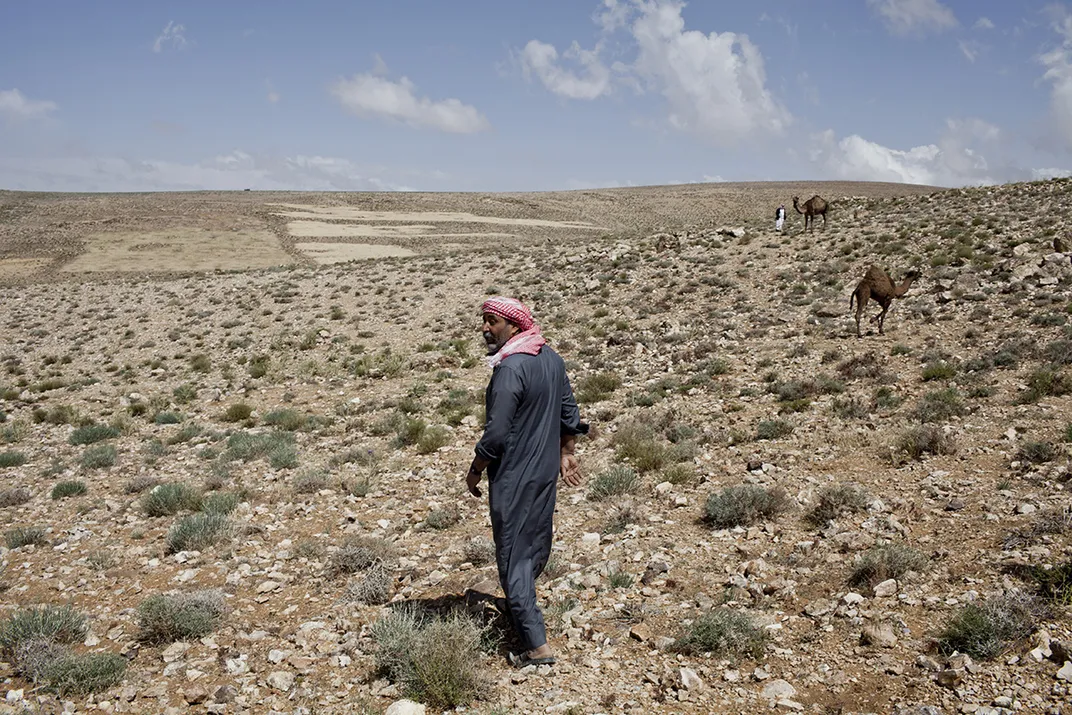
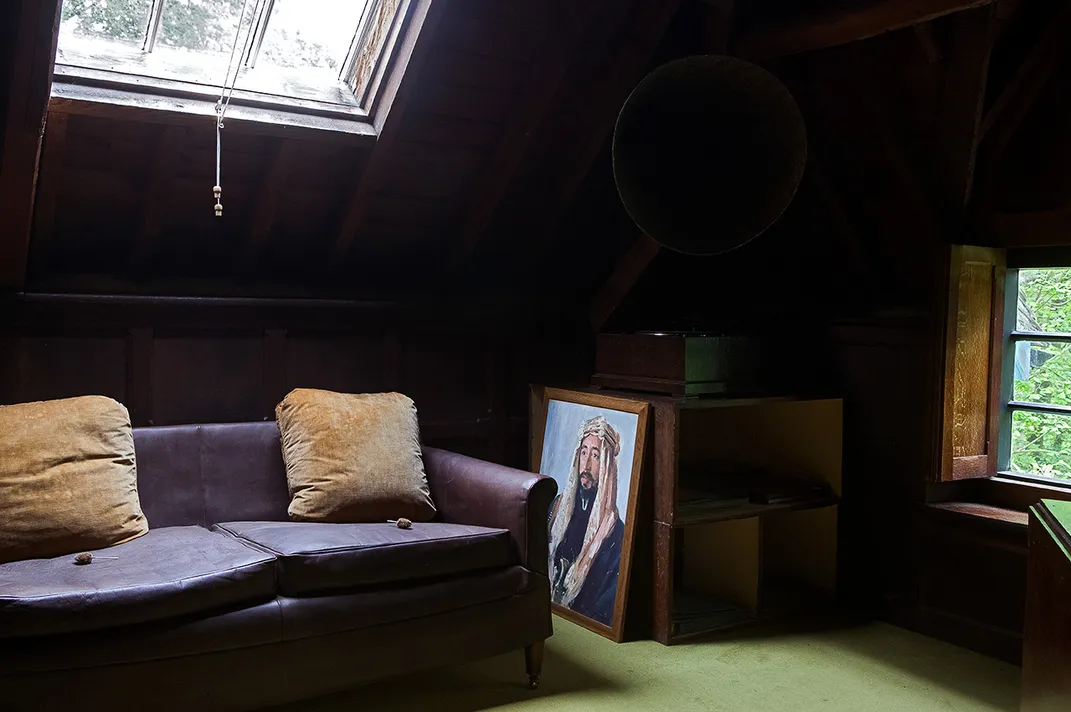
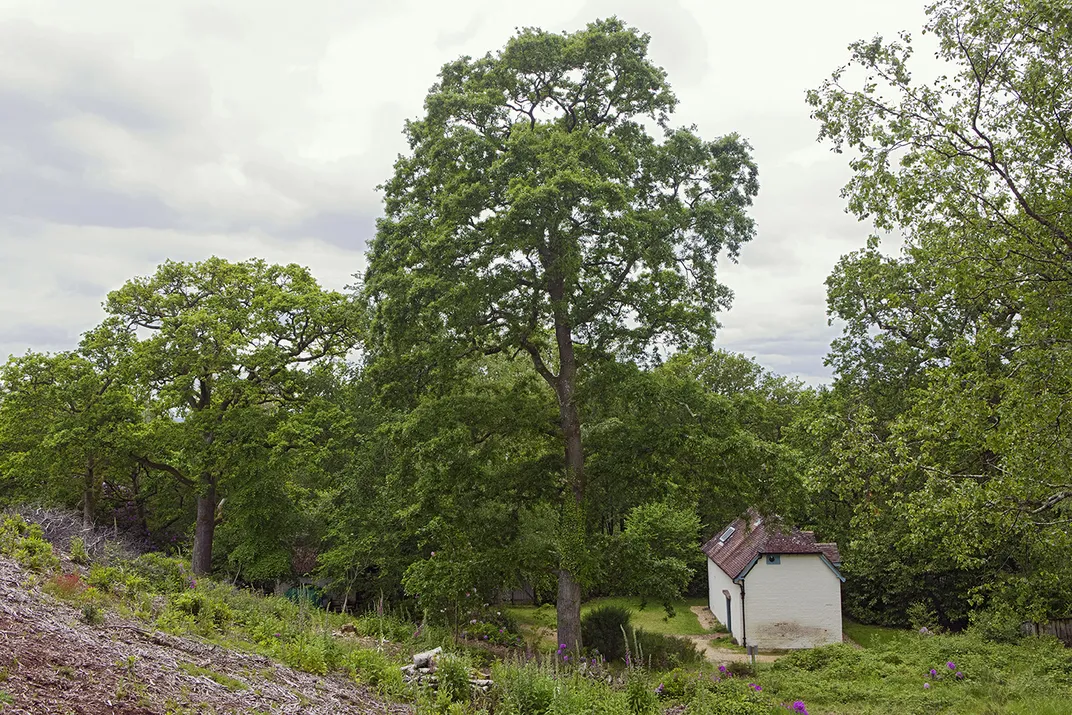
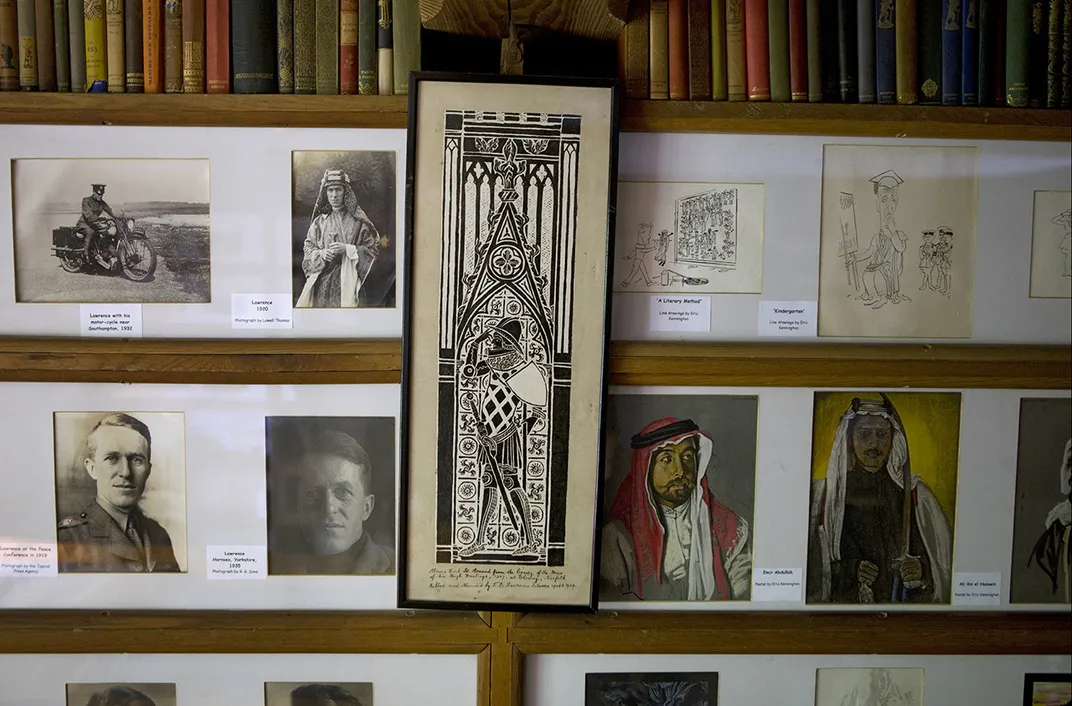
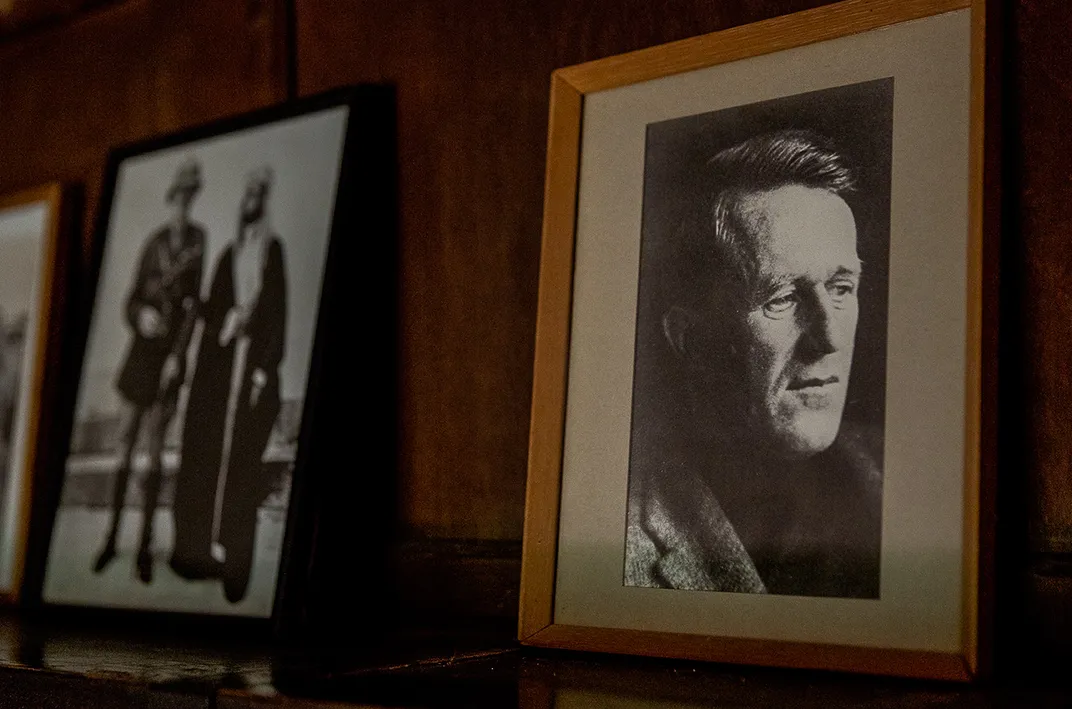
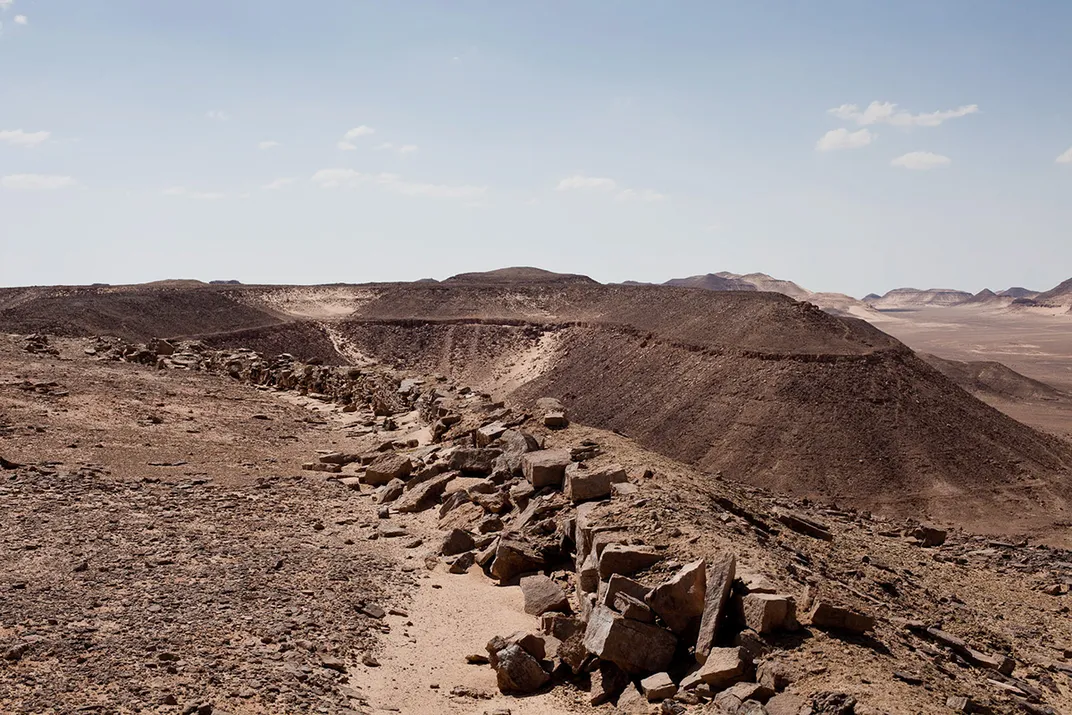
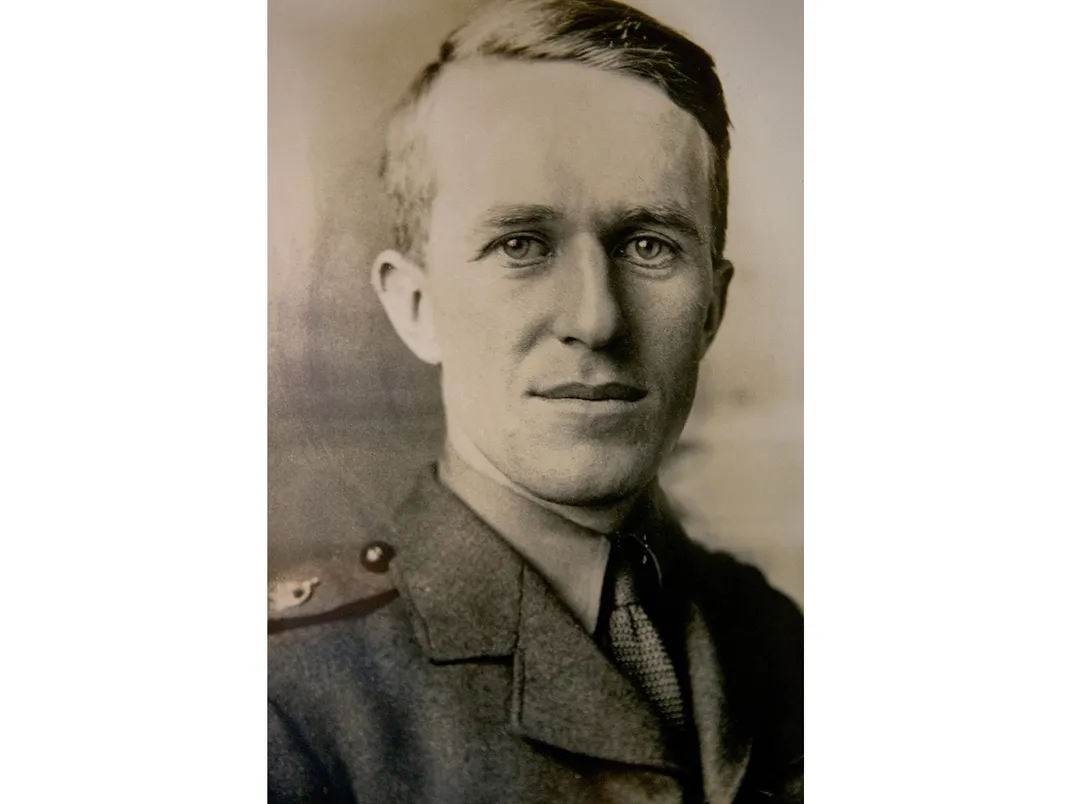
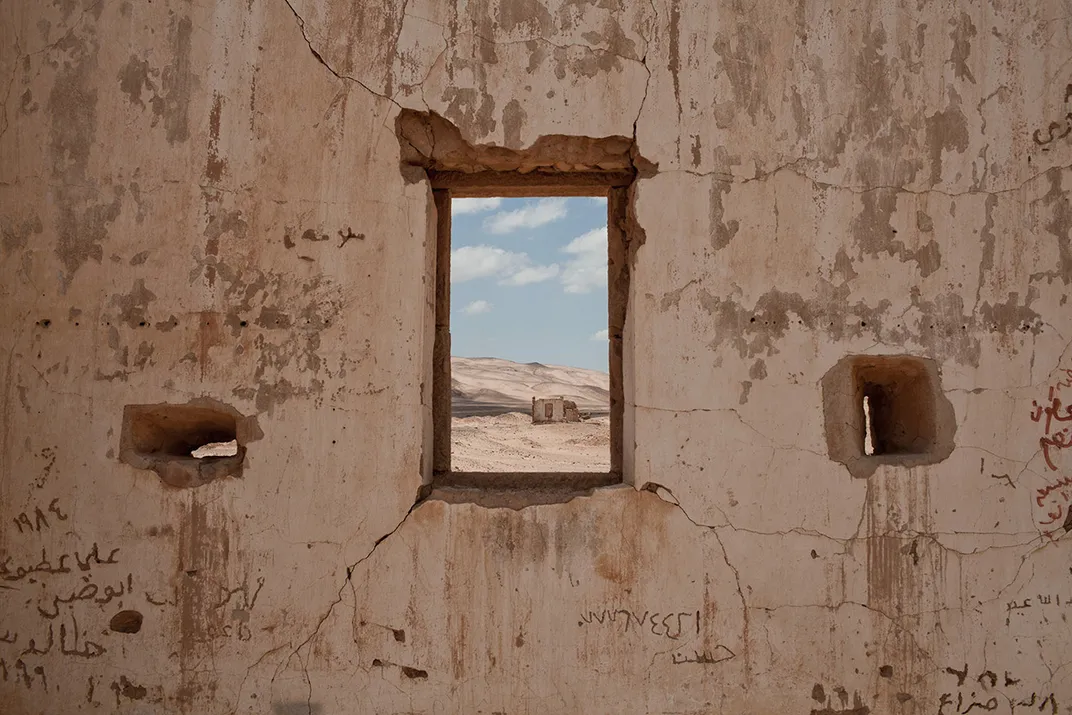
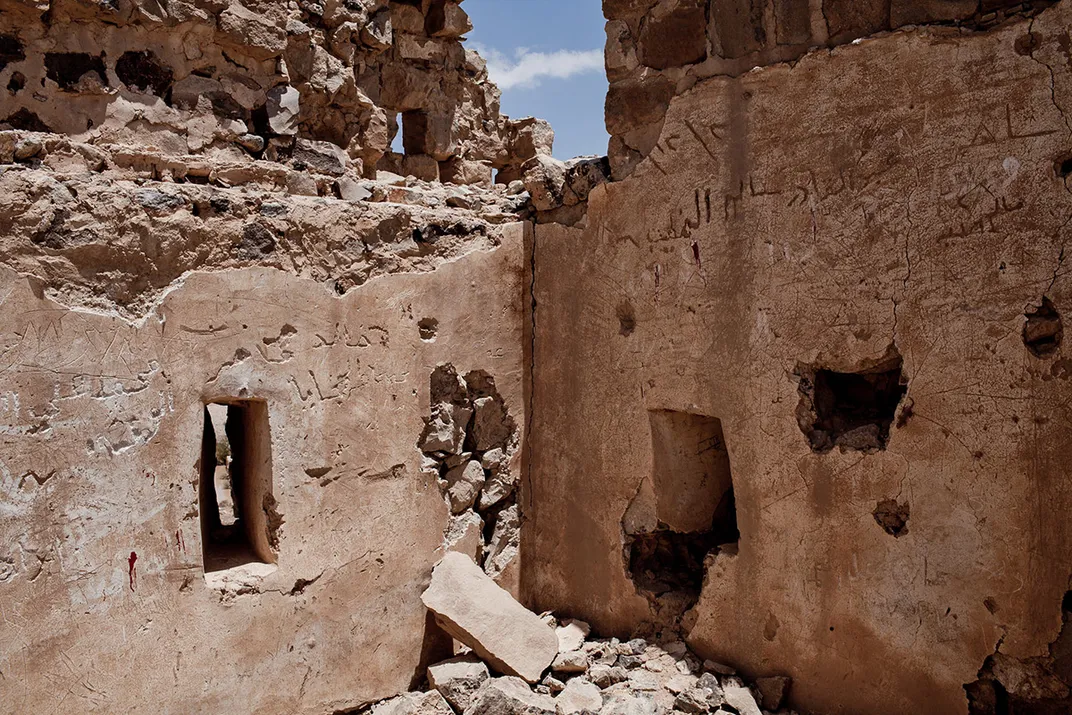
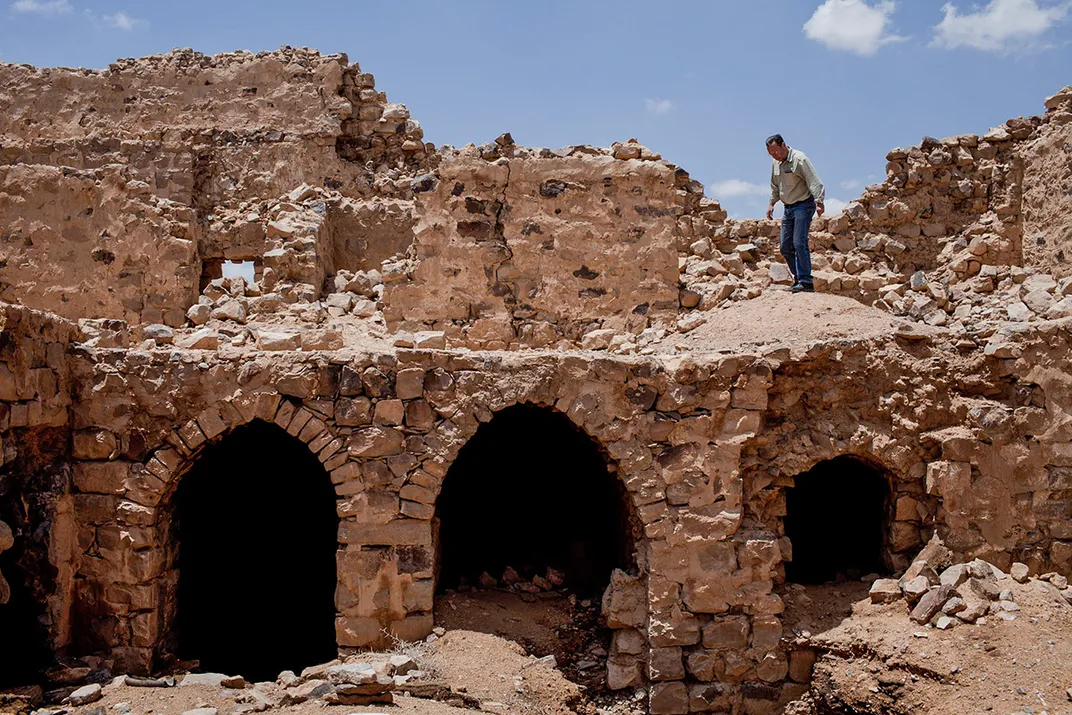
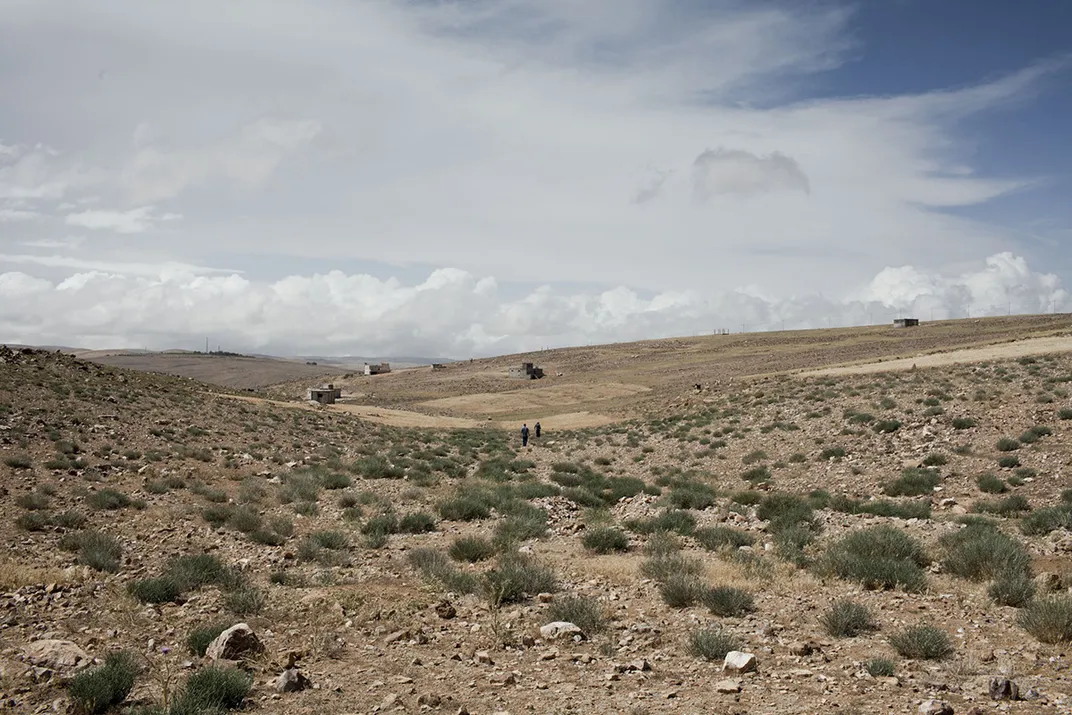
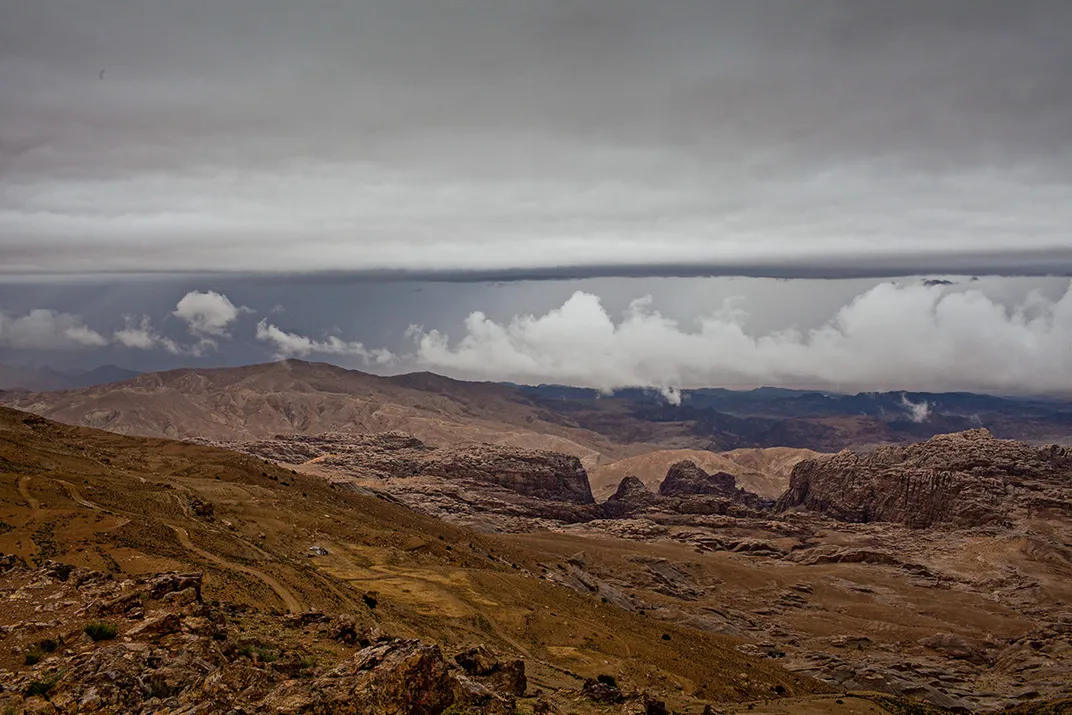
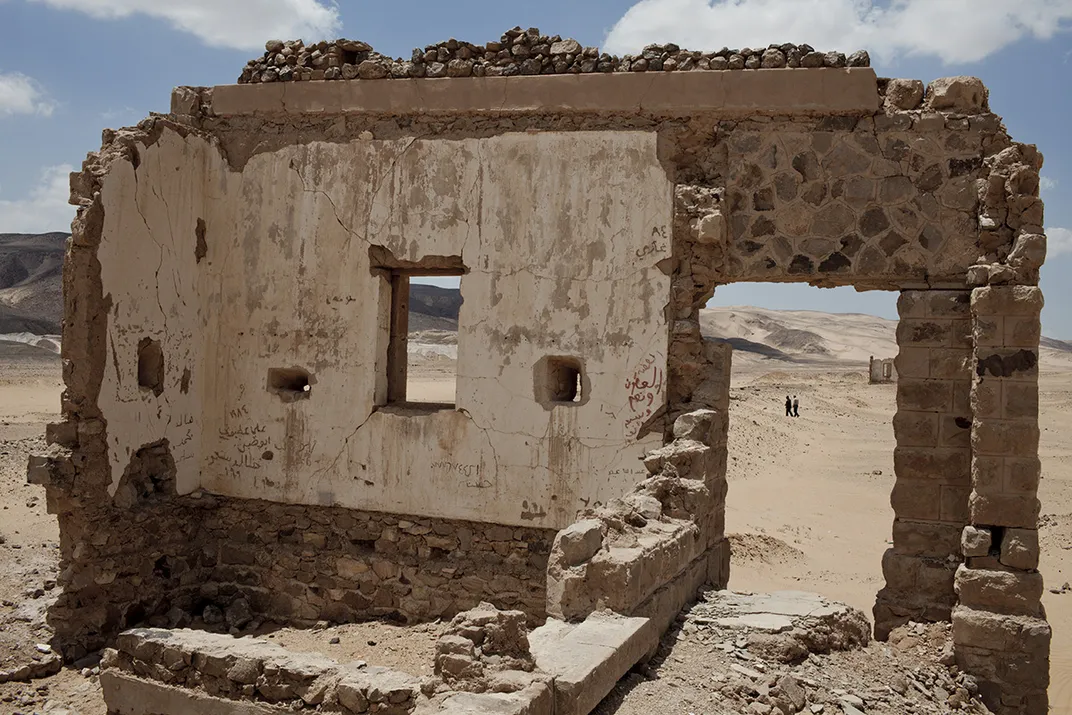
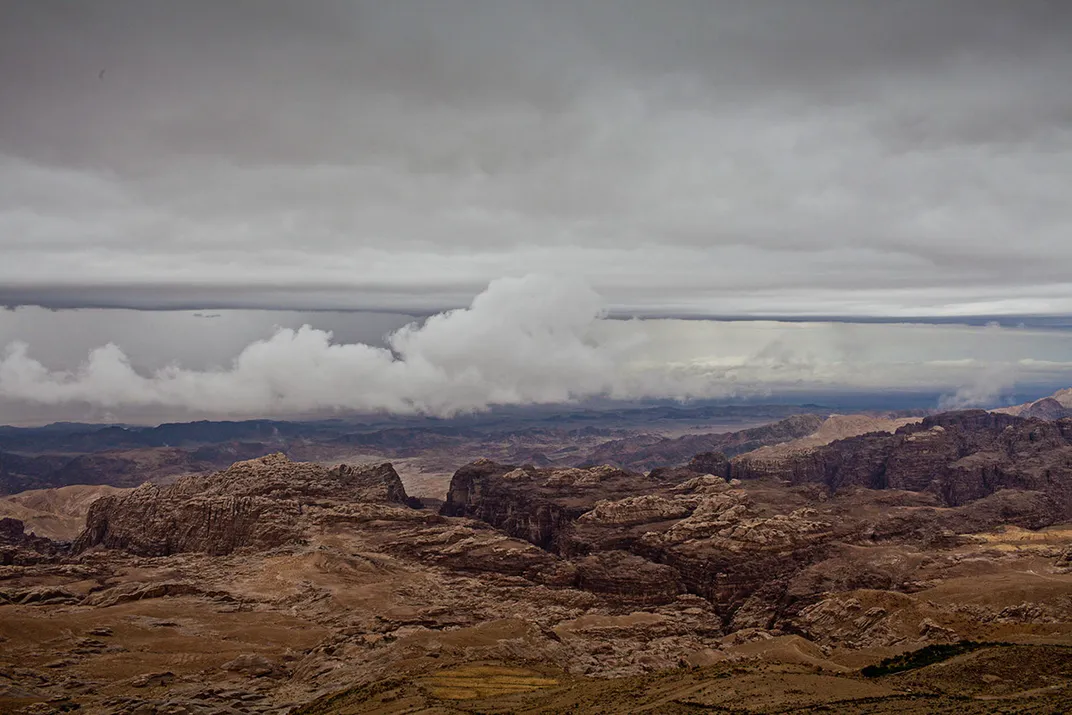
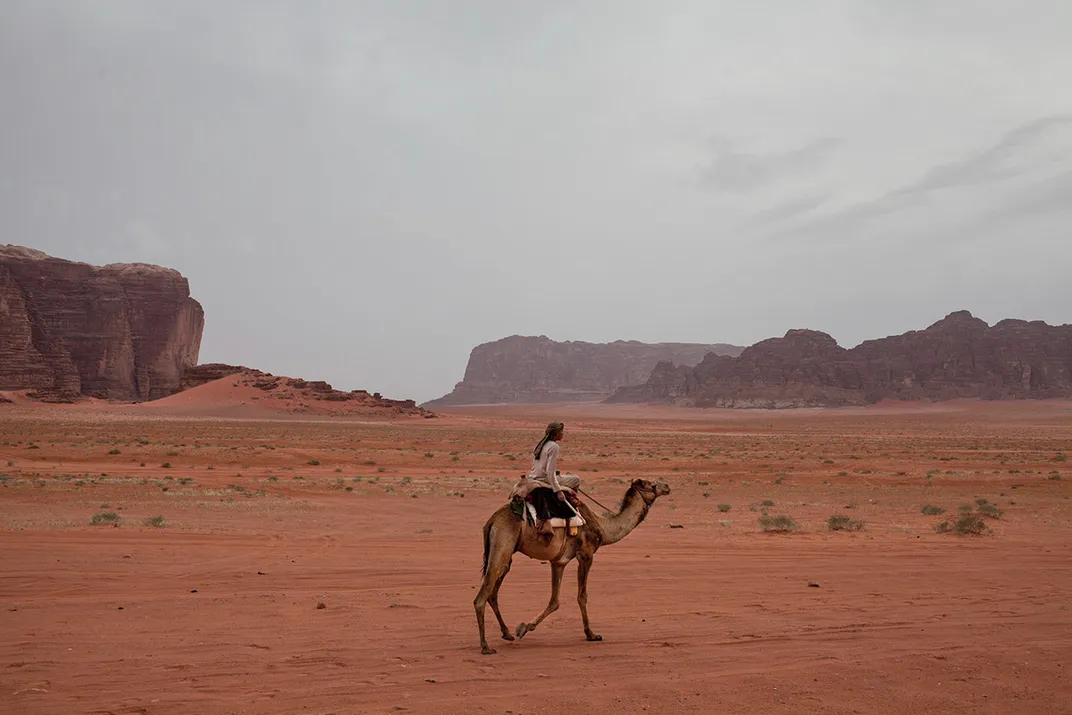
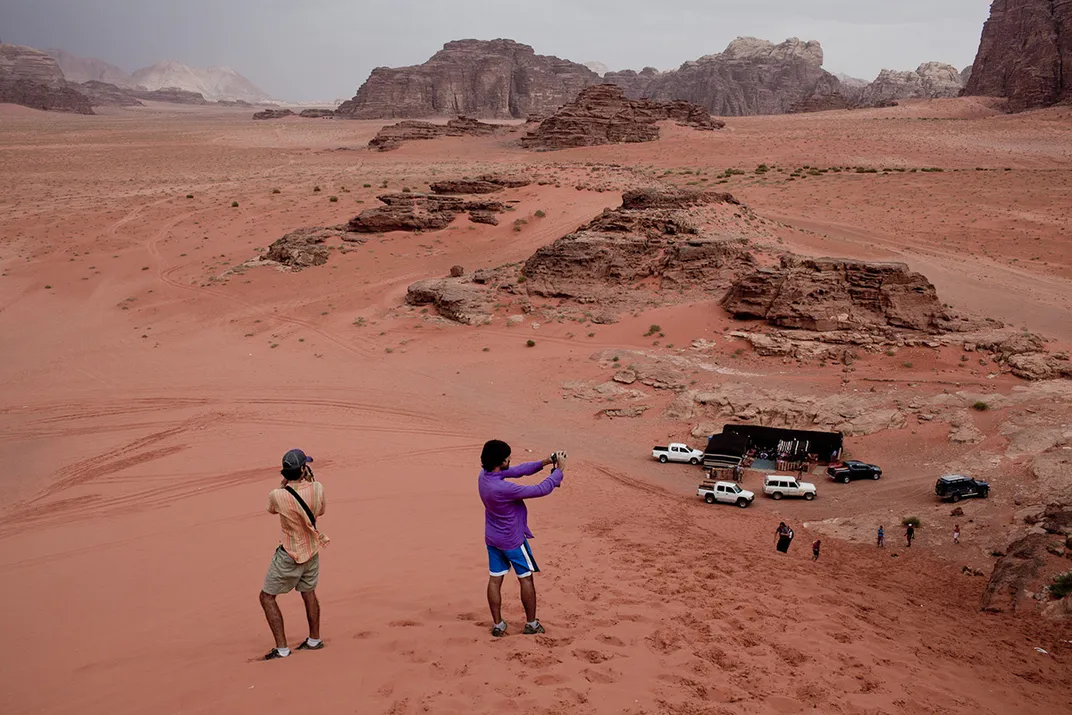

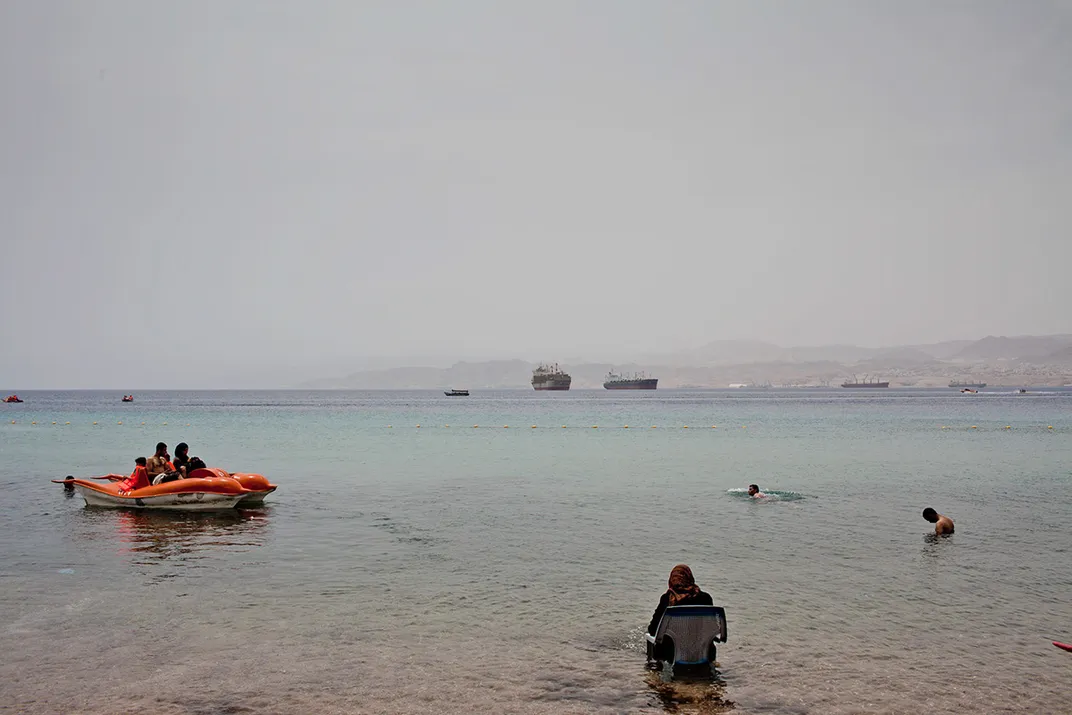
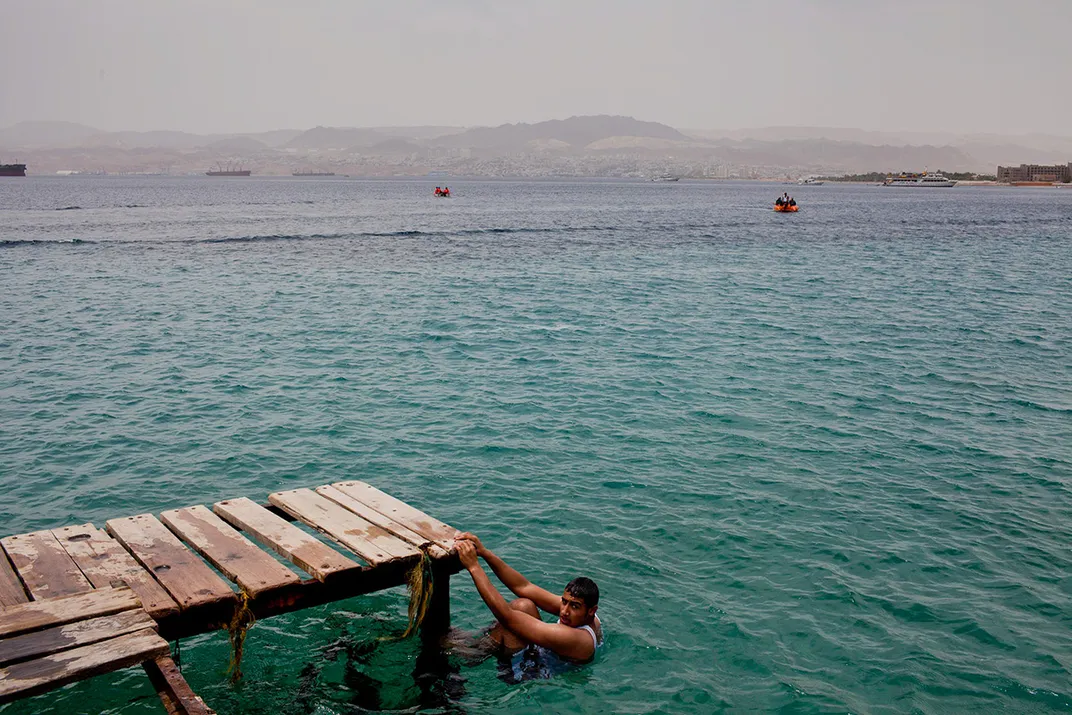
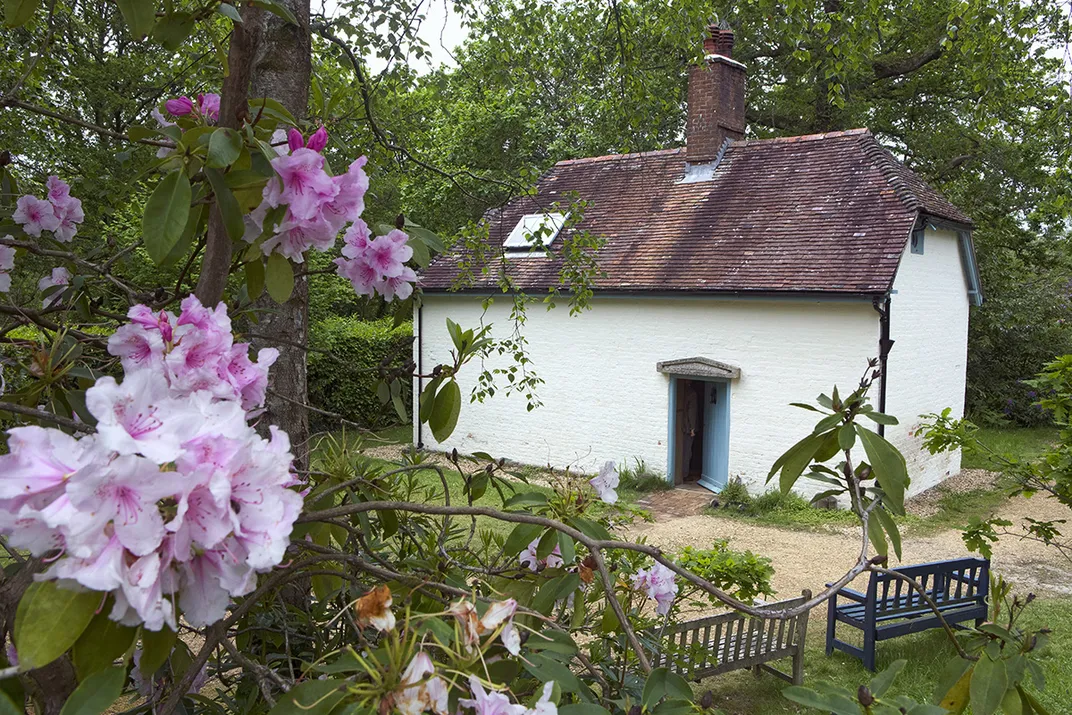
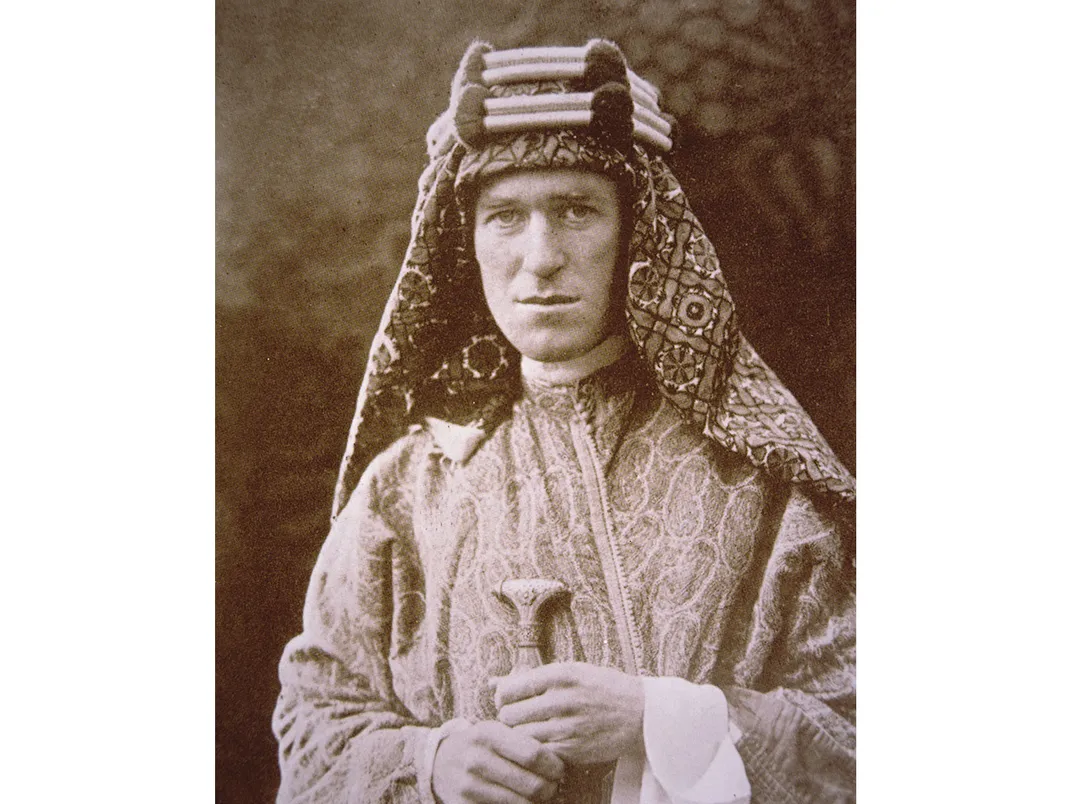
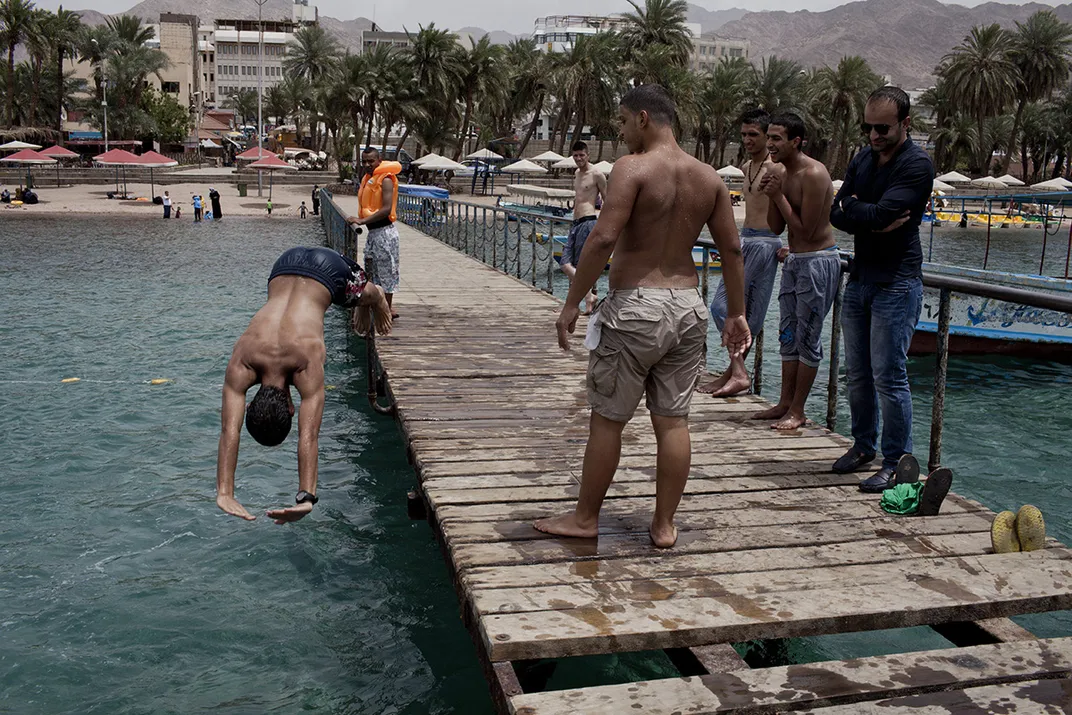
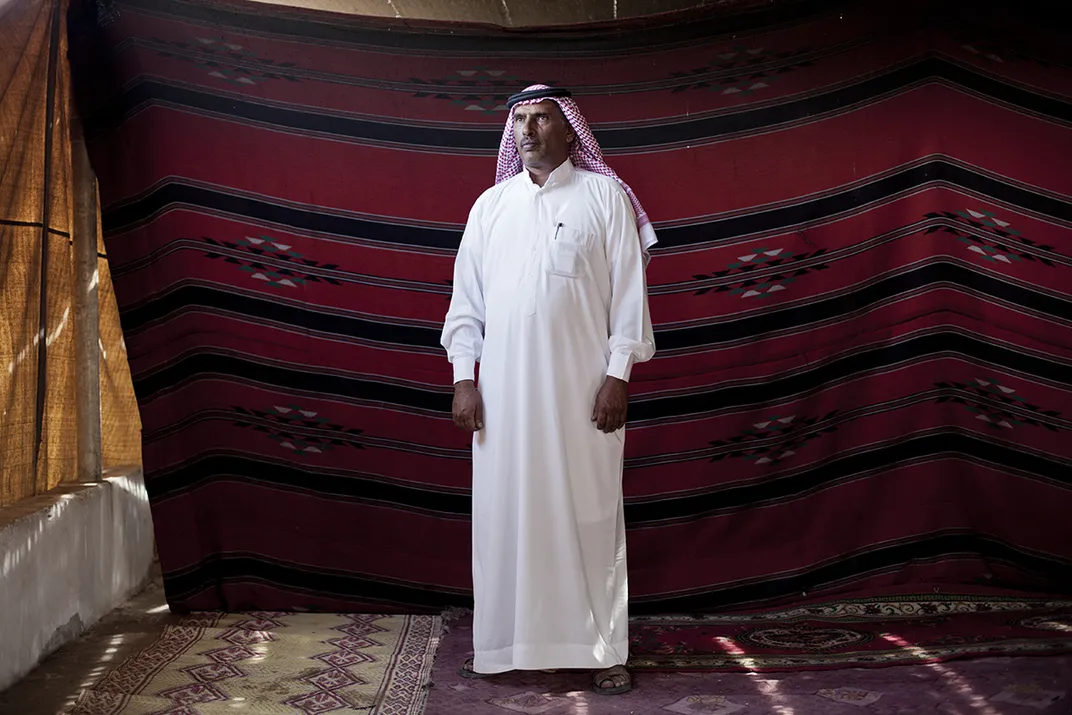
/https://tf-cmsv2-smithsonianmag-media.s3.amazonaws.com/accounts/headshot/Anderson_.jpg)